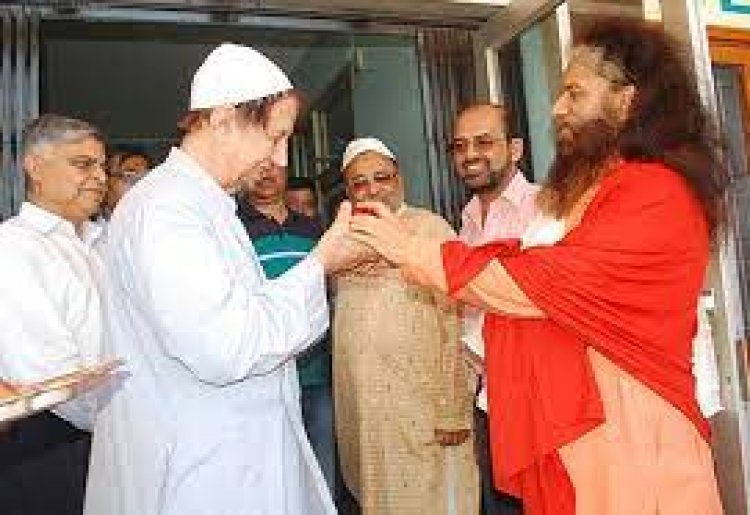A Hindu, Muslim Social and Economic Comparison
Asia News Agency

Kalaiyarasan A (assistant professor at the Madras Institute of Development Studies, Chennai) and Christophe Jaffrelot (senior research fellow at CERI-Sciences Po/CNRS, Paris, professor of Indian Politics and Sociology at King’s India Institute, London) present some interesting facts / data about Muslims in India and more importantly, a comparison of the social and economic status of Hindus and Muslims.
The ‘caste’ system
There are three broad groupings of Muslim castes — Ashrafs, Ajlafs and Arzals — which approximate to upper castes, OBCs and Dalits respectively. However, the authors emphaise, Dalit Muslims don’t self-identify as Scheduled Castes in survey data as they don’t enjoy reservation. Their castes are usually listed in the OBC category. OBCs constitute about 60 per cent of Indian Muslims, followed by 38 per cent of upper castes and the remaining 2 per cent constitute SC/STs. These groups, however, are unevenly distributed geographically. Pasmandas, comprising OBCs and Dalits, constitute 76 per cent of Muslims in UP and Bihar, for instance.
Hindu, Muslim, comparison of wealth
The average per capita wealth among Hindu upper castes was Rs 8,64,984 in 2019, as against Rs 4,27,149 for OBCs, and Rs 2,28,437 for Dalits. The figures for upper-caste Muslims and OBCs were Rs 3,43,014 and Rs 3,10,922, respectively. In other words, conclude the two authors, “on average, the wealth of Hindu upper castes was more than three times that of Dalits and twice that of OBCs, while this gap was just 10 per cent among Muslims. In Bihar, where Pasmanda Muslims are in large numbers, wealth inequality among Muslims is insignificant — just 2 per cent — and in Madhya Pradesh, Pasmanda Muslims do better than Ashrafs in wealth accumulation by 14 percentage points. By contrast, the gap is 43 per cent in UP, where there are remnants of landed Muslim aristocracy. However, note the two authors “if we compare the wealth gap among the Hindus of UP, on average, the Hindu upper castes own almost twice as much wealth as OBCs and three times as much as Dalits.”
Hindu, Muslim comparison of consumptions trends
The authors notice a similar trend in consumption, too. In 2021-22, the average per capita monthly expenditure among the Muslim upper castes was Rs 2,180, as against Rs 2,151 among Pasmandas, a margin of 1.4 per cent. The corresponding figures for Hindus were quite different: Upper castes, with Rs 3,321, consumed 40 per cent more than OBCs (Rs 2,180) and 57 per cent more than Dalits (Rs 2,122). The gap among Muslims was rather small in UP (6.2 per cent) and Bihar (10 per cent), while it stood at, respectively, 48 per cent for the Hindu upper castes vis-à-vis OBCs and 60 per cent vis-à-vis Dalits in UP, and 27 per cent and 48 per cent in Bihar.
Hindu, Muslim educational comparison
In terms of educational attainment also, Ashrafs and Pasmandas are not so different. In 2021-22, the percentage of upper caste Muslim youth (18 to 23 years) attending higher educational institutions was the same as the Pasmandas: 19.8 per cent. By contrast, the percentage of Hindu youth in higher education among upper castes was as high as 46.5 per cent, while it was 36 per cent for OBCs and 26 per cent for Dalits. Interestingly, in UP and Madhya Pradesh, Pasmandas do even better than their upper-caste counterparts. In fact, in UP, Muslim upper castes are experiencing negative growth in educational attendance. As a result, their enrollment came down to 12 per cent in 2021-22, as against 14 per cent in 2011-12. The authors see this as “an unprecedented development in the history of India……simply because every group, so far, has experienced greater access to higher education."
Hindu, Muslim comparison of access to jobs
Muslims’ lower access to education gets reflected in access to regular jobs. The percentage of salaried workers among Muslims is 19.3 per cent as against 21.5 per cent for Hindus. But, again, there is no difference between Muslim upper castes and Pasmandas. In contrast, the percentage of salaried workers among Hindu upper castes is 33 per cent as against 19.9 per cent for Hindu OBCs and 21.5 per cent for Dalits. In states such as UP, Bihar, Rajasthan, Maharashtra, Andhra Pradesh and Karnataka, Pasmanda Muslims do better than their upper-caste counterparts, whereas Hindu upper castes still control most of the coveted jobs.
Conclusion
In sum, the authors conclude “Muslims are less differentiated along class and caste lines than Hindus: While Hindus form an extremely unequal community, with upper castes being very resilient net gainers, Muslims are experiencing collective deprivation…”
Having understood the above analyses, the BJP is wooing the Pasmandas. In UP for example, during the recent local body elections, the BJP nominated 395 Muslim candidates and 61 won. Three-fourths of these 395 candidates were Pasmandas.
















